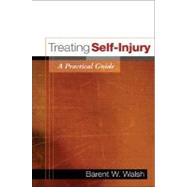
| Definition and Contexts | |
| Definition, Differentiation from Suicide, and Classification | p. 3 |
| An Overview of Direct and Indirect Self-Harm | p. 21 |
| Major Groups in Which Self-Injury Occurs | p. 32 |
| Body Piercing, Tattooing, Branding, Scarification, and Other Forms of Body Modification | p. 48 |
| Assessment and Treatment | |
| A Biopsychosocial Model for Self-Injury | p. 57 |
| Initial Therapeutic Responses | p. 71 |
| Cognitive-Behavioral Assessment | p. 80 |
| Contingency Management | p. 116 |
| Replacement Skills Training | p. 125 |
| Cognitive Treatment | p. 150 |
| Body Image Work | p. 167 |
| Exposure Treatment and Resolution of Trauma | p. 186 |
| Family Treatment | p. 201 |
| Psychopharmacological Treatment | p. 212 |
| Managing the Reactions of Therapists and Other Caregivers to Self-Injury | p. 221 |
| Specialized Topics | |
| Contagion and Self-Injury | p. 231 |
| A Protocol for Managing Self-Injury in School Settings | p. 244 |
| Treating Major Self-Injury | p. 255 |
| Conclusion | p. 271 |
| Afterword | p. 273 |
| Breathing Manual | p. 275 |
| Body Attitudes Scale | p. 283 |
| Websites Related to Self-Injury | p. 285 |
| Bill of Rights for People Who Self-Harm | p. 289 |
| References | p. 293 |
| Index | p. 305 |
| Table of Contents provided by Ingram. All Rights Reserved. |
The New copy of this book will include any supplemental materials advertised. Please check the title of the book to determine if it should include any access cards, study guides, lab manuals, CDs, etc.
The Used, Rental and eBook copies of this book are not guaranteed to include any supplemental materials. Typically, only the book itself is included. This is true even if the title states it includes any access cards, study guides, lab manuals, CDs, etc.